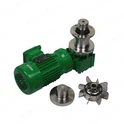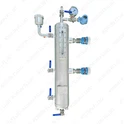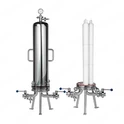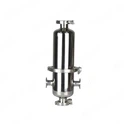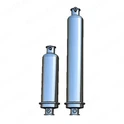The noise and vibration generated by a high - shear mixer during operation mainly originate from the following components:
Motor
As the power source of the high - shear mixer, the stator and rotor within the motor vibrate due to electromagnetic forces when energized. If this vibration is transmitted to other parts of the mixer, it can trigger noise and further vibrations. After prolonged operation, wear of the motor bearings may lead to rotor eccentricity, creating unbalanced forces during motor operation, which in turn cause vibrations and noise.
Mixing Shaft
When the mixing shaft rotates at high speeds, it vibrates due to friction with the materials and its own imbalance. This issue is more prevalent in shafts with greater length and smaller diameters. In addition, insufficient installation accuracy, such as a significant deviation in coaxiality with the motor shaft, generates additional torque and vibrations during operation, resulting in noise.
Mixing Blades
High - speed rotation of the blades creates strong shearing and stirring actions with the materials, generating periodic impact forces. These forces cause the blades to vibrate, and the vibrations are transmitted through the mixing shaft to the entire mixer, producing noise. Moreover, improper blade design, or wear and deformation during use, lead to uneven material flow and unstable forces, contributing to vibrations and noise.
Reducer
During the meshing of gears inside the reducer, meshing impacts and vibrations occur due to tooth profile errors, gear wear, and other factors. These vibrations are transferred to the mixer frame via the reducer housing, generating noise. When the reducer's bearings are damaged, the support stiffness of the gear shafts decreases, causing gear deflection and vibrations, which further intensify noise and vibration generation.
Frame and Base
If the frame and base of the mixer lack sufficient rigidity, they will undergo significant deformation and vibration under the vibrational excitation from components like the motor and mixing shaft, amplifying the noise. Additionally, an insecure connection between the frame, base, and the ground causes the mixer to shake during operation. This not only produces noise but also compromises the mixer's stability and reduces its service life.


